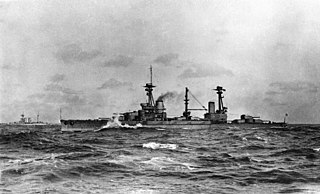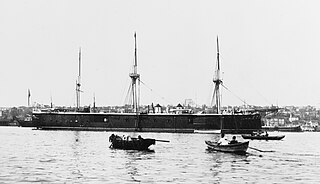 W
WAbdül Kadir was a pre-dreadnought battleship laid down in 1892 at the Imperial Arsenal in Constantinople for the Ottoman Navy, the first vessel of this type to be ordered by the Ottoman Empire. The ship was the first capital ship to be laid down by the Ottomans in more than a decade. She was to have a main armament of four 28-centimeter (11 in) guns, with an armored belt that was 230 mm (9.1 in) thick. Work proceeded on the ship very slowly, primarily the result of a lack of funds; after two years, only the frames for the hull had been erected, and by the time work stopped in 1906, the hull had been only partially plated. During the long construction period, the supports for the keel shifted, which distorted the structure and prevented completion. The unfinished ship was ultimately broken up for scrap in 1909.
 W
WHMS Agincourt was a dreadnought battleship built in the United Kingdom in the early 1910s. Originally part of Brazil's role in a South American naval arms race, she holds the distinction of mounting more heavy guns (fourteen) and more turrets (seven) than any other dreadnought battleship, in keeping with the Brazilians' requirement for an especially impressive design.
 W
WHMS Erin was a dreadnought battleship of the Royal Navy, originally ordered by the Ottoman government from the British Vickers Company. The ship was to have been named Reşadiye when she entered service with the Ottoman Navy. The Reşadiye class was designed to be at least the equal of any other ship afloat or under construction. When the First World War began in August 1914, Reşadiye was nearly complete and was seized at the orders of Winston Churchill, the First Lord of the Admiralty to keep her in British hands and prevent her from being used by Germany or German allies. There is no evidence that the seizure played any part in the Ottoman government declaring war on Britain and the Entente Cordiale.
 W
WMesudiye was a central-battery ironclad of the Ottoman Navy, one of the largest ships of that type ever built. She was built at the Thames Iron Works in Britain between 1871 and 1875. Mesudiye had one sister ship, though she was purchased by the Royal Navy and commissioned as HMS Superb. Her primary armament consisted of twelve 10-inch (250 mm) guns in a central armored battery.
 W
WHMS Erin was a dreadnought battleship of the Royal Navy, originally ordered by the Ottoman government from the British Vickers Company. The ship was to have been named Reşadiye when she entered service with the Ottoman Navy. The Reşadiye class was designed to be at least the equal of any other ship afloat or under construction. When the First World War began in August 1914, Reşadiye was nearly complete and was seized at the orders of Winston Churchill, the First Lord of the Admiralty to keep her in British hands and prevent her from being used by Germany or German allies. There is no evidence that the seizure played any part in the Ottoman government declaring war on Britain and the Entente Cordiale.
 W
WThe Reşadiye class was a group of two dreadnought battleships ordered by the Ottoman Empire from Britain in the 1910s. The design for the ships was based on the British King George V-class battleships, although it incorporated several significant improvements. They carried the same 13.5-inch (343 mm) main battery guns as the British ships, but their secondary battery consisted of 6-inch (152 mm) guns, compared to the British vessels' 4-inch (102 mm) pieces. The first ship, Reşadiye, was laid down in 1911 and completed in August 1914, shortly after the outbreak of World War I; she was seized by the British Royal Navy and commissioned as HMS Erin. The second ship, Fatih Sultan Mehmed, had only been ordered in April 1914 and little work had been done by the start of the war, so she was quickly broken up for scrap.
 W
WHMS Agincourt was a dreadnought battleship built in the United Kingdom in the early 1910s. Originally part of Brazil's role in a South American naval arms race, she holds the distinction of mounting more heavy guns (fourteen) and more turrets (seven) than any other dreadnought battleship, in keeping with the Brazilians' requirement for an especially impressive design.
 W
WHMS Agincourt was a dreadnought battleship built in the United Kingdom in the early 1910s. Originally part of Brazil's role in a South American naval arms race, she holds the distinction of mounting more heavy guns (fourteen) and more turrets (seven) than any other dreadnought battleship, in keeping with the Brazilians' requirement for an especially impressive design.
 W
WSMS Goeben was the second of two Moltke-class battlecruisers of the Imperial German Navy, launched in 1911 and named after the German Franco-Prussian War veteran General August Karl von Goeben. Along with her sister ship, Goeben was similar to the previous German battlecruiser design, Von der Tann, but larger, with increased armor protection and two more main guns in an additional turret. Goeben and Moltke were significantly larger and better armored than the comparable British Indefatigable class.